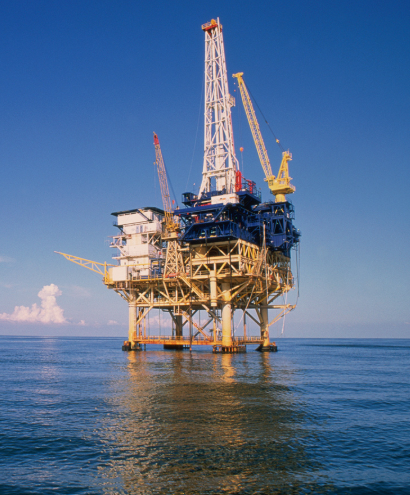
Inside an Oil Rig: The Process and Technology Behind Oil Extraction
An oil rig is far more than just a large structure used for drilling and extracting oil. It’s a sophisticated, engineered system designed to function in harsh environments, combining advanced technology, meticulous planning, and stringent safety protocols. Offshore oil rigs are constructed to withstand extreme weather and ocean conditions, allowing them to extract oil safely from deep below the sea floor.
Much like a self-sustained city, an oil rig houses various operational centers, including living quarters, dining areas, and control rooms. The entire structure is integrated with cutting-edge technology that ensures safe and efficient drilling operations, constantly monitored by engineers and operators.
How Do Oil Rigs Work?
At its core, the function of an oil rig revolves around drilling through the ocean floor to access oil reservoirs. The process begins with a rotating drill connected to a long pipe, which cuts through layers of rock and sediment. Once the drill reaches the seabed, workers pump high-pressure drilling fluid (also called mud) down the drill to remove debris and push material back to the surface. As drilling progresses, steel casings are inserted and cemented into place to stabilize the well. The entire operation is carried out with strict safety procedures and the careful use of various equipment to manage the extraction process.
The Drilling Process: Step by Step
The process of drilling for oil involves multiple, carefully planned steps. Each phase of the operation is crucial to ensuring a successful and safe outcome. Below is a detailed explanation of how the drilling process unfolds:
1. Site Survey and Planning
Before the drilling even begins, experts conduct a thorough survey to determine the optimal drilling location. They use advanced equipment to assess rock formations, pressure levels, and the geological structure of the seabed. This information is used to craft a comprehensive plan, outlining the best approach for drilling, including the depth of the well, the design of the casing, and potential risks. This initial step is crucial for the safety and efficiency of the entire operation.
2. Transporting and Positioning the Rig
Once the planning phase is complete, the rig is transported to the designated location. This is no easy feat; large rigs are moved using specialized ships that either tow, float, or lift the structure into position. A precise dynamic positioning system is employed to ensure the rig is accurately placed above the target well. This system helps the rig remain stable despite sea currents or adverse weather conditions.
3. Initial Drilling (Spudding)
The first step in the actual drilling process is called “spudding.” During this phase, a small hole is drilled through the surface rock to confirm the well’s location. This preliminary borehole helps gather important data about the rock formations and allows engineers to verify that the drilling trajectory is on track. It also prepares the well for casing, which will be inserted and cemented in place to provide structural support.
4. Drilling Operations
Once the spud hole is complete, the full-scale drilling process begins. This is the most complex and potentially hazardous part of the operation, requiring careful management. The rig assembles a series of pipes, known as the drill string, which is rotated to cut through layers of rock. Drilling fluid is continuously pumped through the string to cool the drill bit and remove rock cuttings. Throughout this process, engineers monitor the rig’s performance and make adjustments as necessary to maintain stability and efficiency.
5. Casing, Cementing, and Tripping
After the drilling reaches a certain depth, a steel casing is lowered into the borehole to provide structural integrity. Cement is pumped into the space between the casing and the surrounding rock to secure it in place and prevent any fluid migration. If the drill bit becomes worn or requires maintenance, the crew will perform a procedure known as “tripping,” where the drill bit is removed for repairs before being reinserted.
6. Evaluation and Completion
Throughout the drilling process, operators perform evaluations to monitor safety and progress. Specialized tools are lowered into the well to gather data on the formation and well conditions. When the target depth is reached, the crew verifies the presence of oil or gas and prepares the well for production. This includes creating holes in the casing to allow hydrocarbons to flow into the wellbore. A production tree is then installed at the wellhead to regulate and control the flow of extracted fluids.
Conclusion
The process of operating an oil rig is highly intricate and requires careful coordination across various stages. From initial surveys and planning to the final completion of the well, every aspect of the operation is meticulously engineered to ensure safety and efficiency. Offshore oil rigs represent a combination of advanced technology, strategic planning, and rigorous safety measures, all working in unison to extract oil from deep beneath the sea floor.